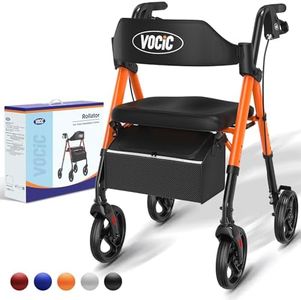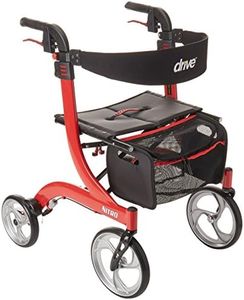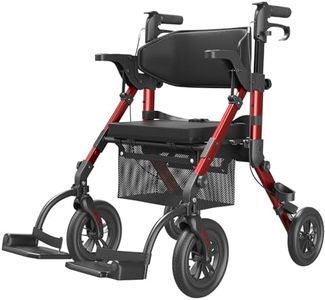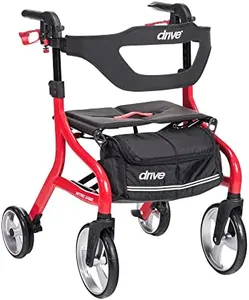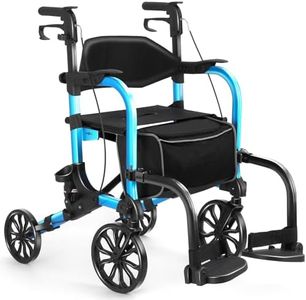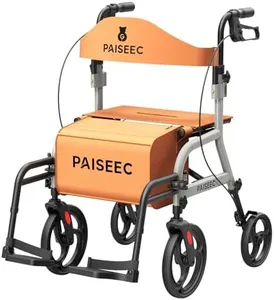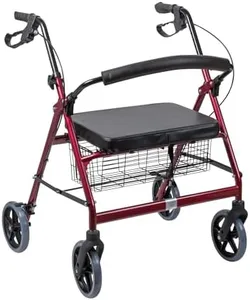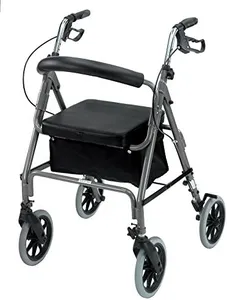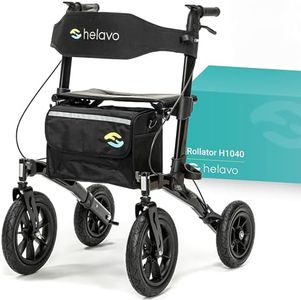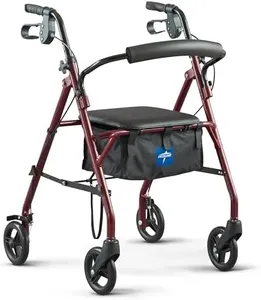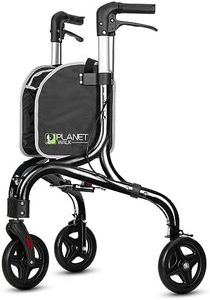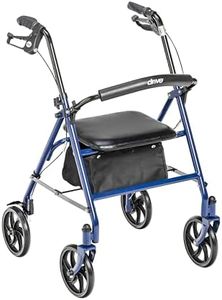We Use CookiesWe use cookies to enhance the security, performance,
functionality and for analytical and promotional activities. By continuing to browse this site you
are agreeing to our privacy policy
10 Best Rollators 2025 in the United States
How do we rank products for you?
Our technology thoroughly searches through the online shopping world, reviewing hundreds of sites. We then process and analyze this information, updating in real-time to bring you the latest top-rated products. This way, you always get the best and most current options available.

Buying Guide for the Best Rollators
Choosing the right rollator can significantly enhance your mobility and independence. Rollators, also known as rolling walkers, come with various features and specifications that cater to different needs and preferences. Understanding these key specifications will help you make an informed decision and select a rollator that best fits your lifestyle and physical requirements.Weight CapacityWeight capacity refers to the maximum weight that the rollator can safely support. This is important to ensure the rollator can handle your body weight without compromising stability or safety. Rollators typically have weight capacities ranging from 250 to 500 pounds. If you are on the heavier side, opt for a rollator with a higher weight capacity to ensure durability and safety.
Height AdjustabilityHeight adjustability allows you to set the handle height to a comfortable level, which is crucial for maintaining proper posture and reducing strain on your back and shoulders. Rollators usually offer adjustable handle heights within a certain range. To find the right height, stand up straight and let your arms hang naturally at your sides. The handles should be at the level of your wrists. Choose a rollator that offers a height range that matches your measurements.
Wheel SizeWheel size affects the rollator's maneuverability and ability to handle different terrains. Smaller wheels (6-8 inches) are suitable for indoor use and smooth surfaces, while larger wheels (8-10 inches) provide better stability and ease of movement on uneven or outdoor surfaces. Consider where you will primarily use the rollator. If you need it for outdoor activities or rough terrains, opt for larger wheels. For indoor use, smaller wheels may suffice.
Seat and BackrestThe seat and backrest provide a place to rest when you need a break from walking. The size, padding, and height of the seat and backrest can vary. A comfortable, well-padded seat and supportive backrest are essential for longer periods of sitting. If you plan to use the rollator frequently for resting, choose one with a comfortable seat and backrest. Ensure the seat height is appropriate for you to sit and stand up easily.
Foldability and PortabilityFoldability refers to how easily the rollator can be collapsed for storage or transport. This is important if you need to take the rollator in a car or store it in a small space. Some rollators fold more compactly than others. If you travel often or have limited storage space, look for a rollator that folds easily and compactly. Consider the weight of the rollator as well, as a lighter model will be easier to lift and transport.
Braking SystemThe braking system is crucial for safety, allowing you to control the rollator's speed and stop when needed. Rollators typically have loop brakes or push-down brakes. Loop brakes are hand-operated and provide more control, while push-down brakes engage when you apply downward pressure on the handles. If you have good hand strength and dexterity, loop brakes may be preferable. For those with limited hand strength, push-down brakes might be easier to use.
Storage OptionsStorage options include baskets, pouches, or trays that allow you to carry personal items or shopping. This feature is important for convenience and independence. Consider what you need to carry regularly and choose a rollator with adequate storage options. If you often carry larger items, a rollator with a spacious basket or tray will be beneficial. For smaller personal items, a pouch may suffice.
Most Popular Categories Right Now

